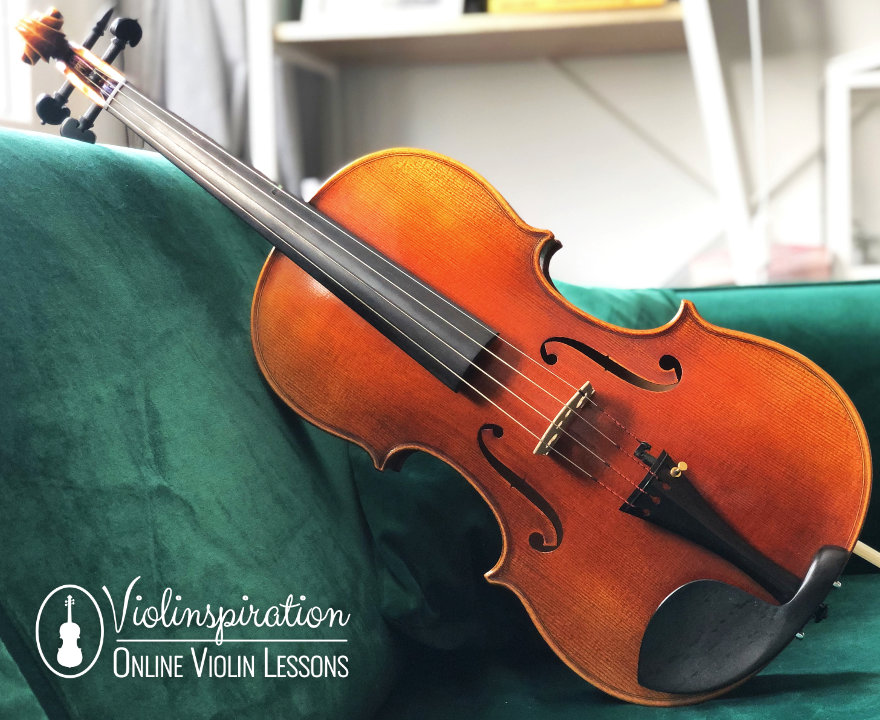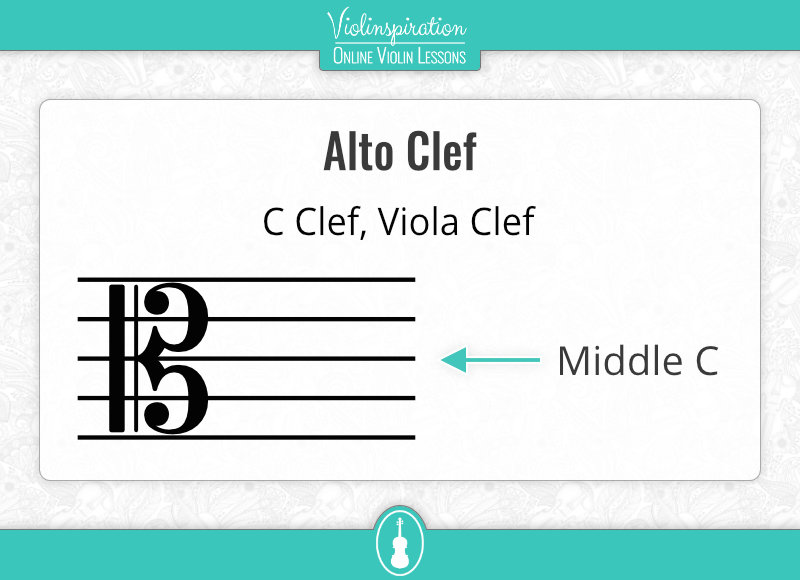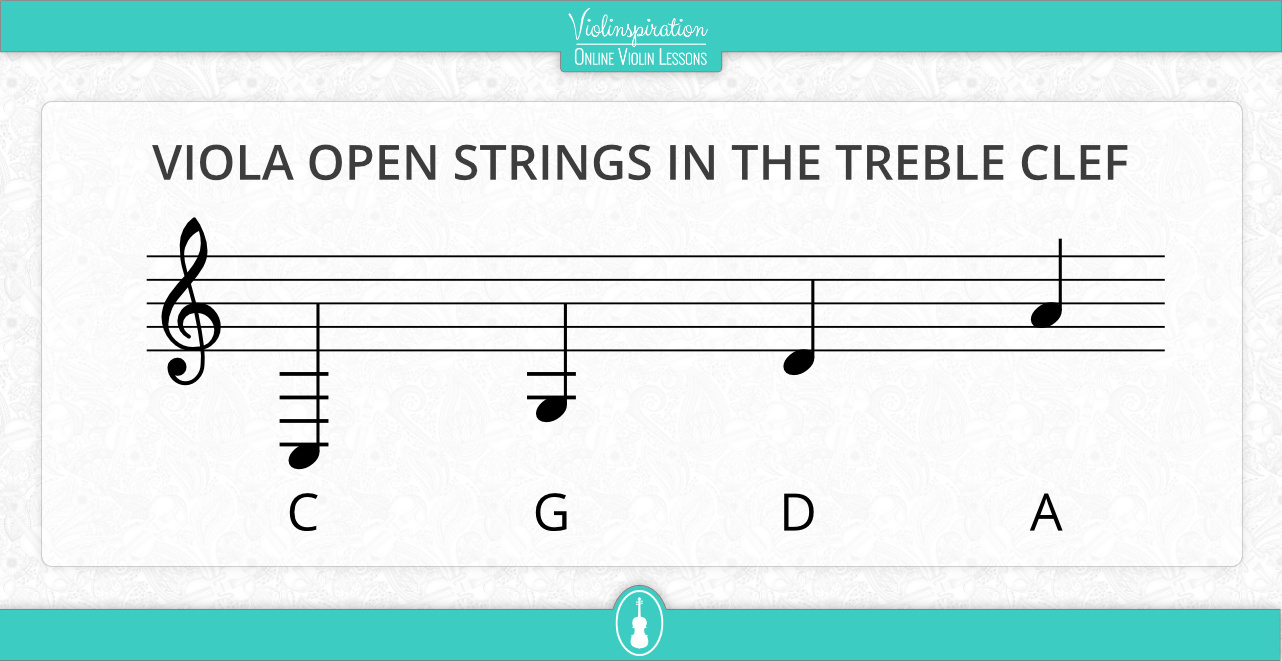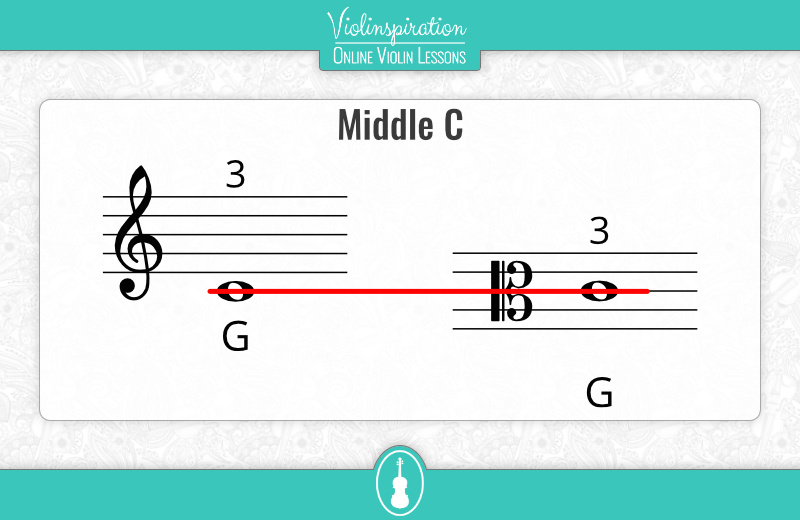Whether you’re a violinist or violist, it’s helpful to know what a viola clef is!
When I first heard a viola and really listened, I thought maybe it would be another easy instrument to pick up after learning the violin. But after some further investigation, I found that this instrument that’s so seemingly similar to the violin has its own unique clef!
I had no idea, after my piano and violin experience, that there was a third clef out there after treble and bass clefs: the elusive “alto clef.”
Today I’ll share with you how this clef works, how to read its notes, and how it compares to our own violin clef.
And for any violists in the room, I’ll also share ways you can play my treble clef music on your viola! I want you to be able to join in on the fun here at Violinspiration!

What is the clef for viola?
The official name for viola clef is “Alto Clef,” which is also called “C Clef.” The alto clef is shaped somewhat like the number 3, and the inner point “points” to the center line on the staff: Middle C.

Why viola clef is called “alto clef”?
If you know the names of the four individual parts in vocal music, you might recognize the word “alto.” This is one of a few special Italian words that describe the four voices:
- Soprano: highest high voice (usually female)
- Alto: lower high voice (usually female)
- Tenor: higher low voice (usually male)
- Bass: lowest low voice (usually male)

Do you have an idea of how these terms might relate to the string instruments?
Each instrument in the violin family corresponds to one of the four voices:
- Violin = soprano
- Viola = alto
- Cello = tenor
- Double bass = bass
So, viola uses the clef for altos, which reduces the use of the ledger lines.
Does viola play in C clef?
Yes – another name for Alto Clef is “C Clef.” Middle C is the center line (third line) on the staff and the intersection of the two curves of the clef point to that middle c line.
The C clef can be moved anywhere on the staff to avoid reading ledger lines. Another popular C clef is “tenor clef,” which is sometimes used in cello and double bass music.

Why does viola use alto clef?
Viola is the alto instrument in orchestral music, and its range is the closest to the human voice. Because of its specific range (C3-E6), the Alto clef is the most suited for average situations. The majority of the viola’s range can be easily read in this clef, using only a few ledger lines.

In other words, the treble clef doesn’t reach low enough for the low C string notes on the viola, and the bass clef just doesn’t reach high enough for notes on the D and A strings. Alto clef is a very happy medium.
Would you like to learn what’s the violin range? Check out my post What Is the Range of a Violin – Q&A.
Comparing Alto clef to other clefs
The treble clef shows a higher range of notes; the alto clef is a nice mid-range, and the bass clef shows a lower range of notes.
See the examples below to have an overview of how the same notes would be written in different clefs.


Do violists read treble clef?
Yes, violists sometimes read treble clef when they play high notes. Using treble clef for higher notes on the A string helps to avoid reading high ledger lines.
Viola music (especially orchestral music) will switch to reading treble clef notes around E5 (the same pitch as the violin E string) and higher. Notes below E5 should generally be written in Alto clef.

How can I read alto clef on viola?
In the alto clef, the middle line of the staff is middle C. This C is the third finger on the G string, right around the middle of the viola’s 1st position range.
If you’ve learned any different clefs before, you might’ve been taught an acronym to remember the five lines and four spaces. For the alto clef, the line notes can be remembered, from bottom to top, with the sentence Fat Alley Cats Eat Garbage.

It’s also useful to learn where are the open string notes in the sheet music.


How to read treble clef on viola
It can be helpful to learn guide notes: one or two notes that you know very well in a new clef. Then, if you need to play other notes in the new clef, you can count up or down from your guide note to figure out the new note.

In treble clef, middle C is one ledger line below the staff. This note is 3rd finger on the G string.

A very helpful guide note to know in Treble clef is E5 – the same pitch as the violin’s open string E, and 4th finger E on your A string.
If viola music switches to a treble clef, it’ll probably be right around this point in the range. E is the 4th space on the staff.
Final Thoughts
As a violinist, it’s very smart to be aware of how the other instruments in the string family operate. That includes understanding that the viola plays in alto clef (viola clef), and the cello and bass play in bass clef.
And if you’re a violist, it’s also incredibly helpful to learn how to read treble clef. Be sure to check out my beginner lessons on reading music if you’d like to start learning today!
Or, if you come across my blog to look for some tips on which instrument – violin or viola – might be better for you, make sure to check out this post.
























